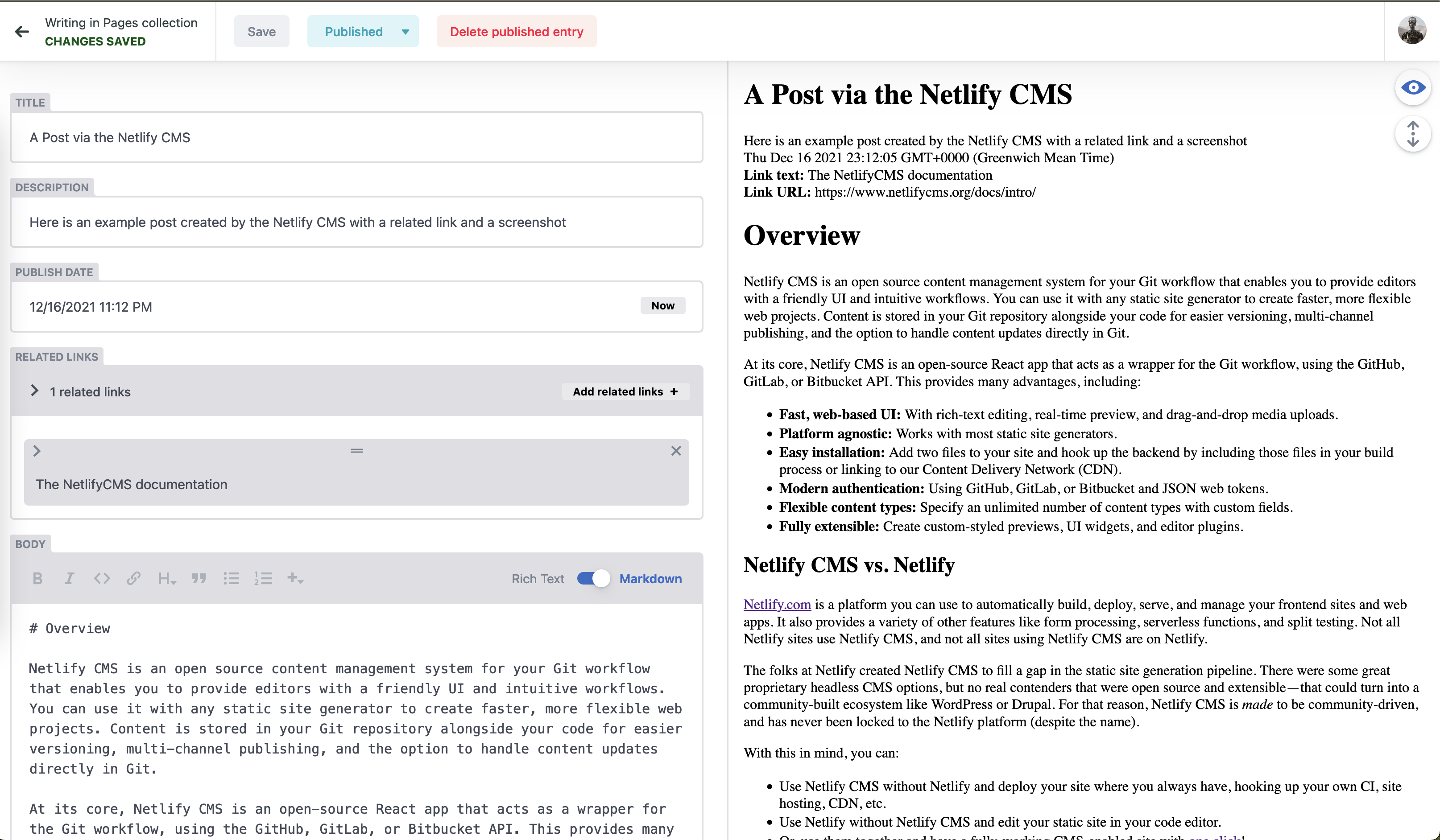Case study
The 'design histories have been around for more than a couple of years. Originally created by the interaction designers of the BAT (Becoming a Teacher), their design history BAT design history.
Well over a year and a half ago I created the same for the SDD (Solutions Delivery and Design), SDD design history. Since then it became apparent that not all interaction designers can use it efficiently, and write design histories in a consistent manner. Therefore I decided to add a CMS on the ‘design histories’. To allow more adoption and a consistent design going forward.
Netlify CMS Design
I have chosen to create the CMS using the Netlify CMS. Netlify CMS is based on client-side JavaScript, reusable APIs and prebuilt Markup. In a nutshell it is single page React application served via a CDN, this means better performance, higher security, lower cost of scaling, and a better developer experience. It is also Open Source, even though with a higher learning curve if you decide to host somewhere else rather than Netlify
What is a design history?
When designing and building a service, it can be easy to forget why previous decisions were made, even more so as new people join the team and others leave. A design history can help by creating a permanent record.
A design history site is like a blog, with posts describing the development of new features, iterations of existing ones or findings from user research – anything that may be useful to return to later.
This project was developed by the Becoming a teacher team at the Department for Education who found that by keeping a design history, they could:
- re-evaluate decisions
- see how a feature changed over time
- see how things tested in research
- give context to new team members
- demonstrate reasons why certain features did not work
- create snapshots of how things looked at significant milestones
- share design decisions across government
- share everything with service assessors
As of February 2020, the Becoming a teacher design history includes more than 200 posts documenting 5 different services. You can learn more about how and why the team created their design history on the DfE Digital blog.
Screenshots
Netlify dashboard
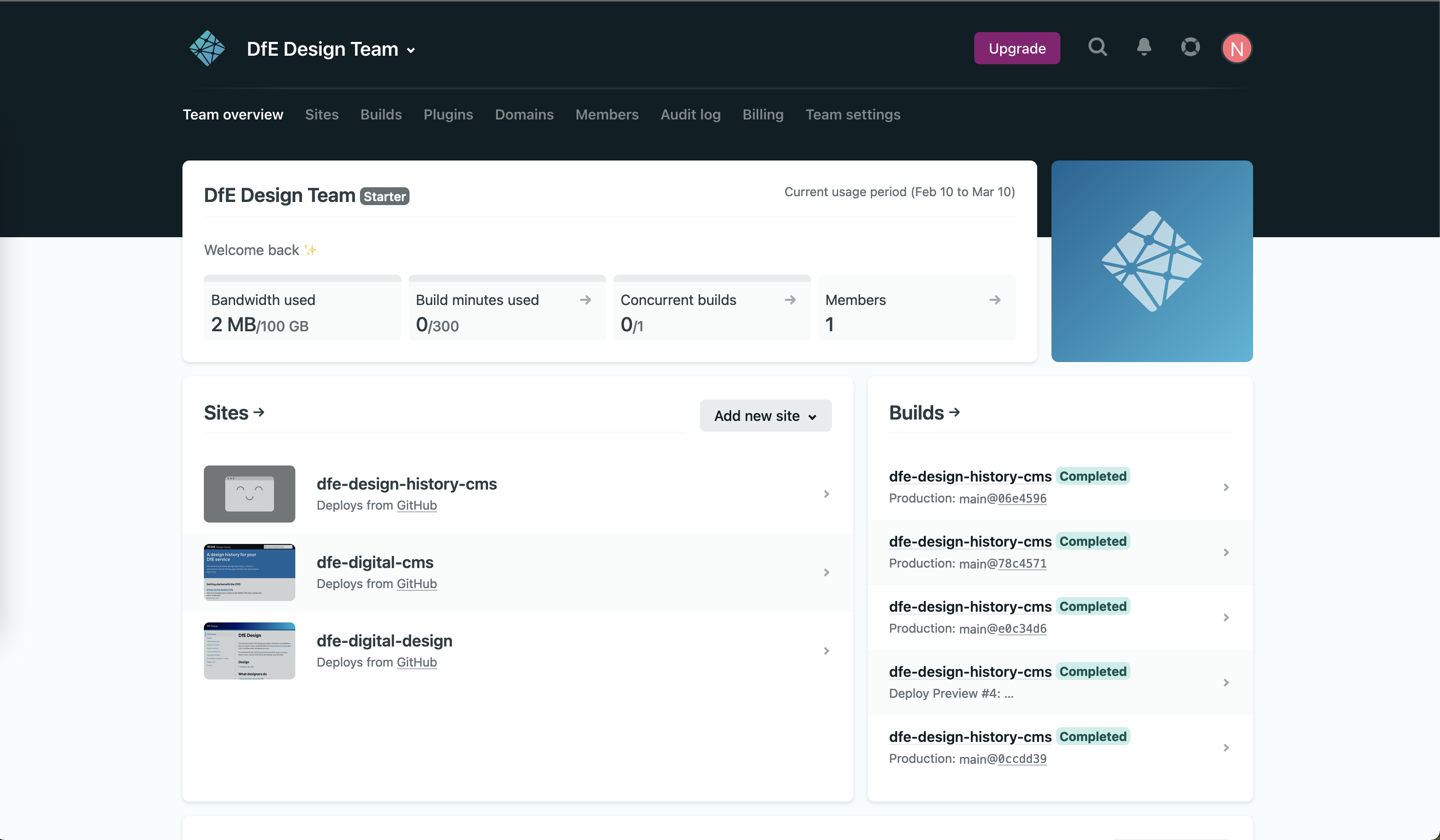
Github repo
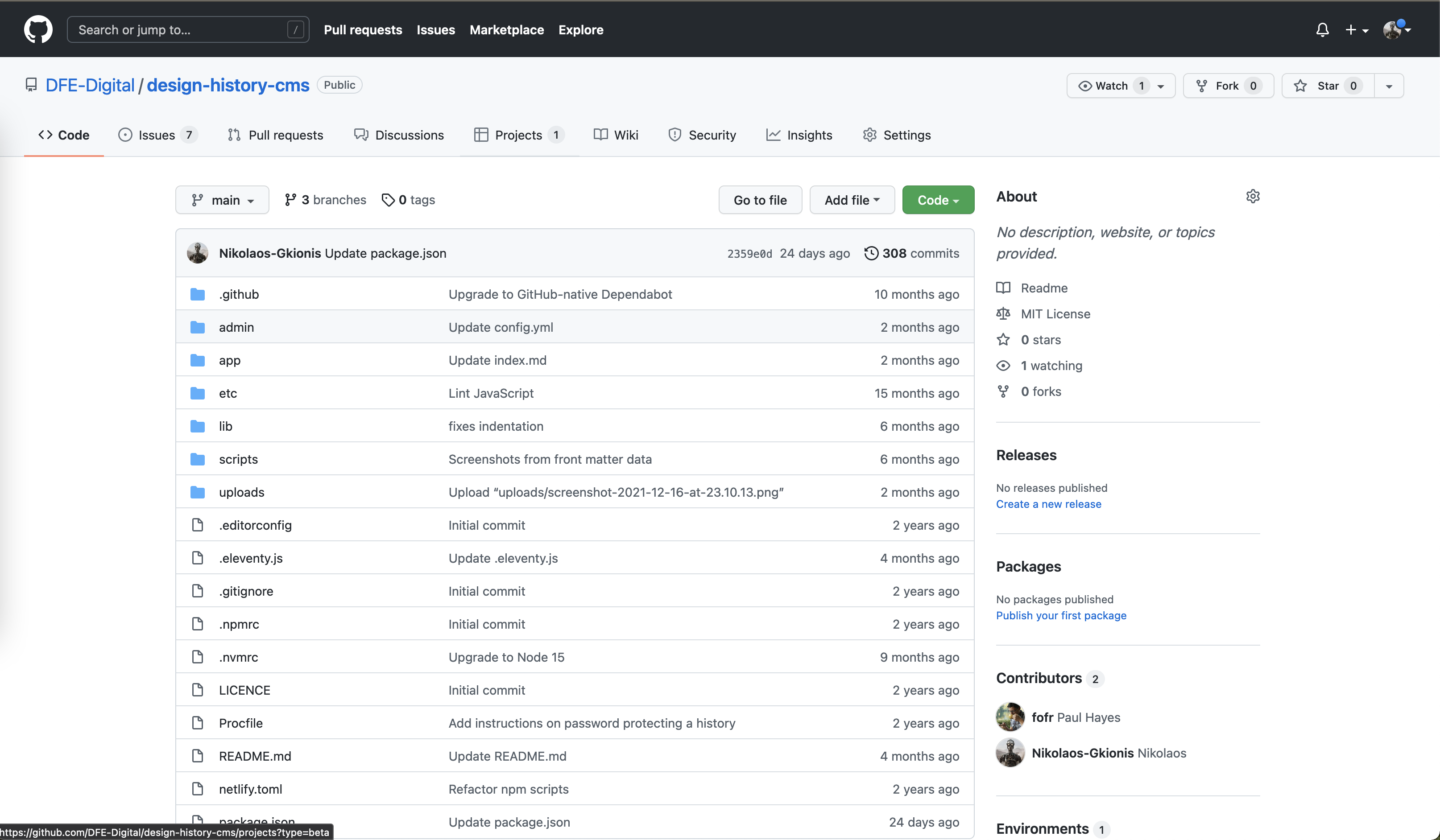
Design History
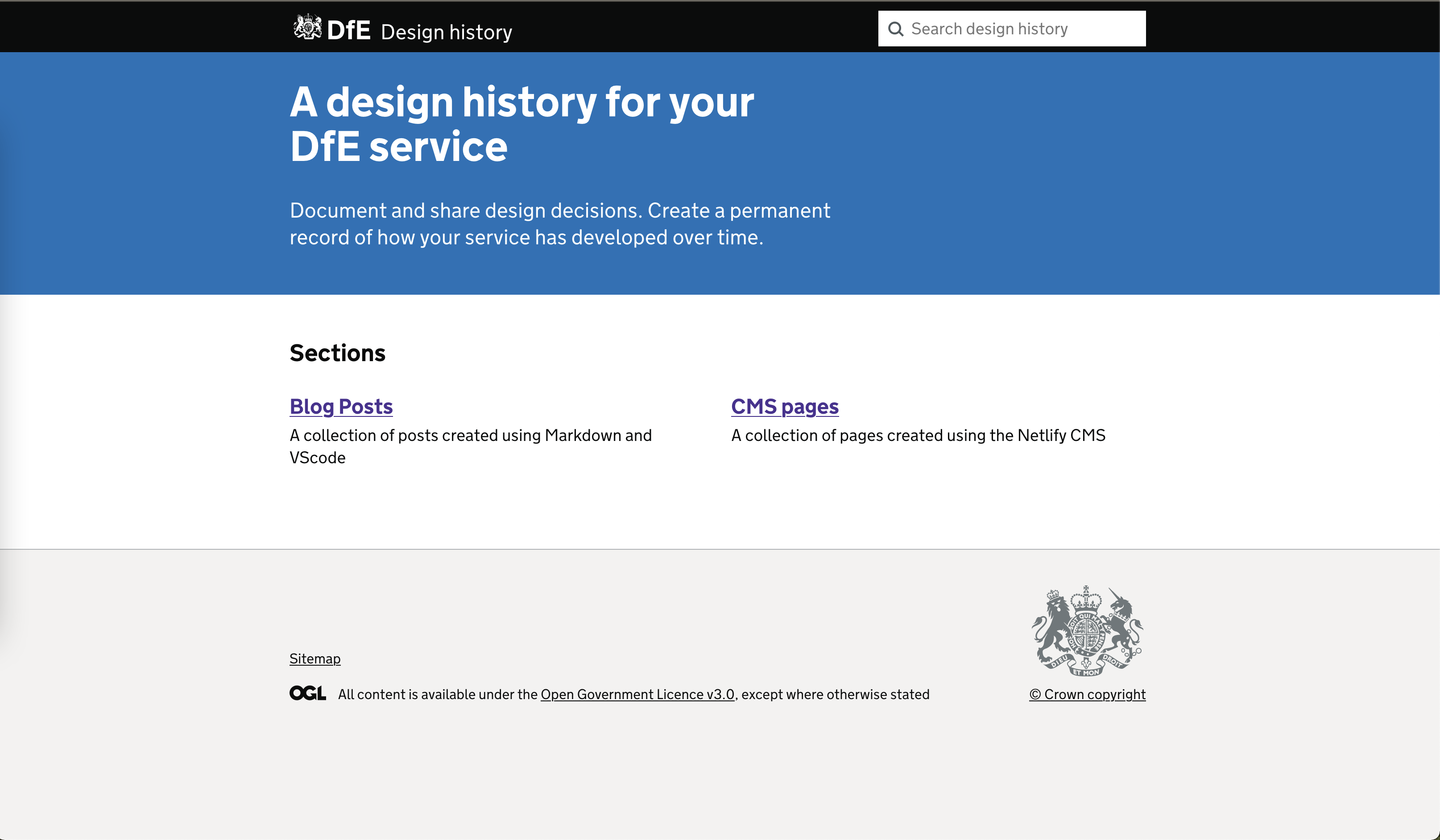
CMS home
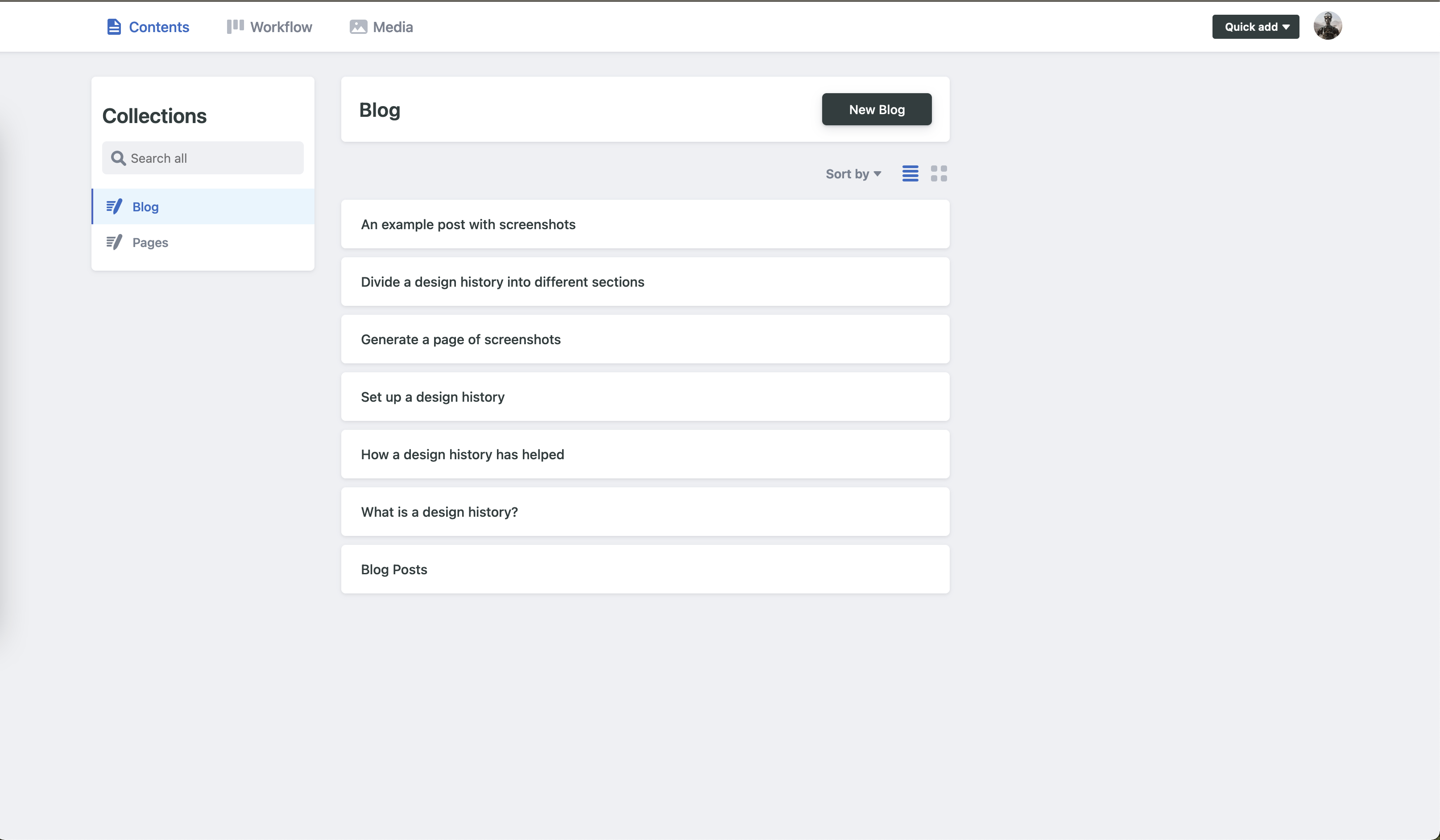
CMS editor
